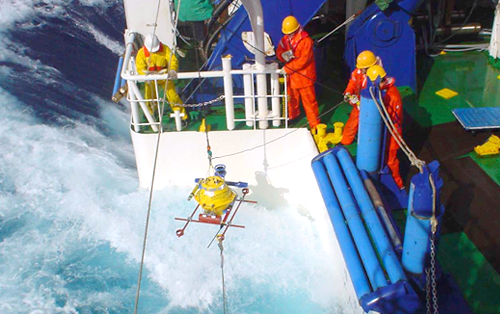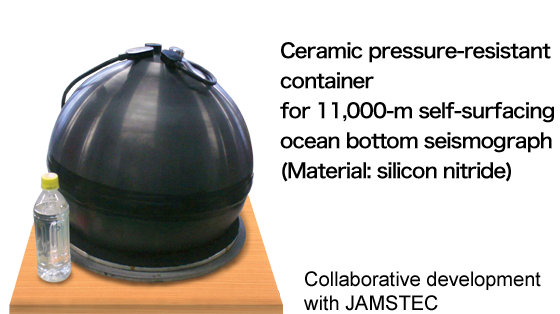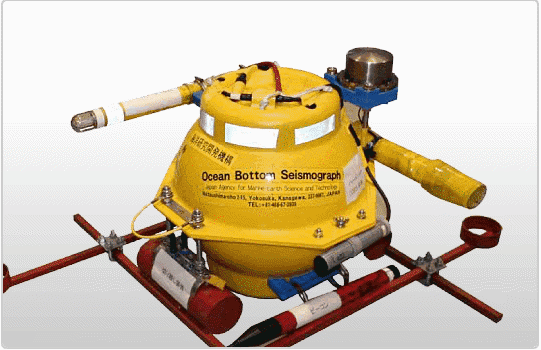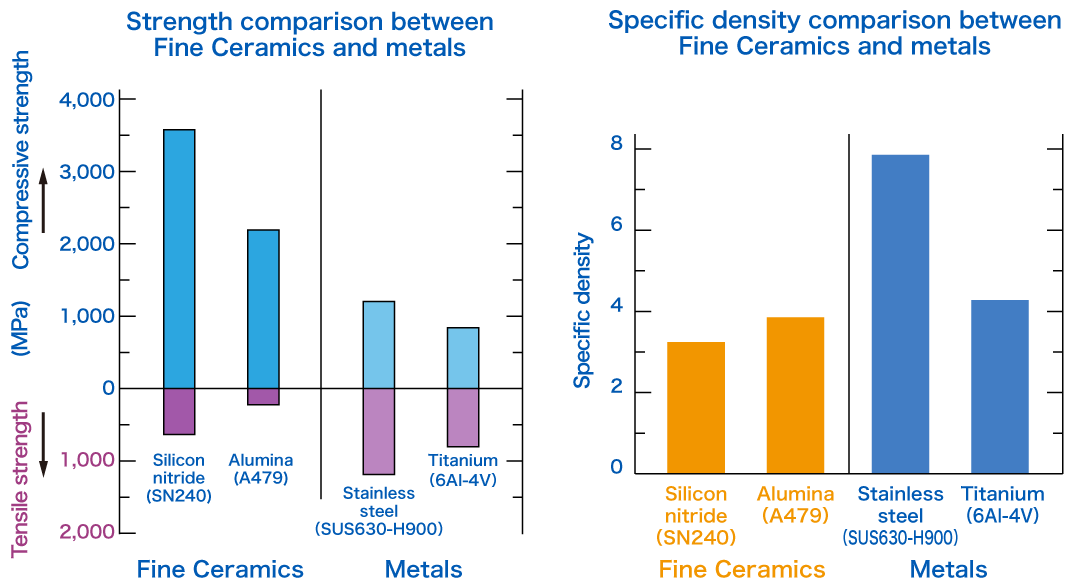Silicon nitride, a Fine Ceramic material, displays distinctive features of corrosion resistance, high compressive strength, and low specific density when employed in submarine pressure-resistant containers.

Image Credit: Nippon Marine Enterprises, Ltd.

Image Credit: Courtesy of Japan Agency for Marine-Earth Science and Technology (JAMSTEC)
Traditionally, pressure-resistant containers have been crafted from glass, which is incapable of withstanding the same depths as the technical ceramic material silicon nitride.
The utilization of Fine Ceramics has facilitated the installation of a seismograph at a sea depth of 11,000 meters (36,089 feet) within the Mariana Trench, which is considered to be the world's deepest.
Self-Surfacing Ocean Bottom Seismograph

Image shows ceramic container. Image Credit: Courtesy of Japan Agency for Marine-Earth Science and Technology (JAMSTEC)
The self-surfacing ocean bottom seismograph captures seismic activity at the seafloor. Once measurements are recorded, the main body detaches from the weight device and rises to the surface where it is retrieved for data analysis.
Certain ocean bottom seismographs house their seismic data recorders within high- pressure-resistant glass containers. Measuring seismic data in deeper seas requires greater pressure resistance, thus an enhanced reliance on ceramic containers for this application is anticipated in the future.
Comparison of Strength and Specific Density Between Fine Ceramics and Metals

The values in the graphs are for reference purposes only. (Data: Courtesy of Japan Agency for Marine-Earth Science and Technology (JAMSTEC))
Graphs depict comparisons among silicon nitride, alumina, high-strength stainless steel, and titanium alloy, validating the superior compressive strength and lower specific density of Fine Ceramics in comparison to metals.

This information has been sourced, reviewed, and adapted from materials provided by Kyocera International, Inc.
For more information on this source, please visit Kyocera International, Inc.